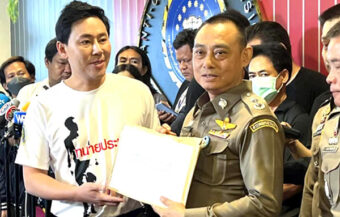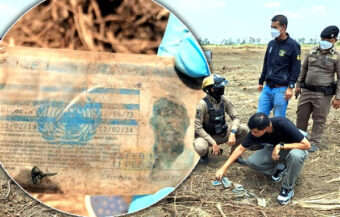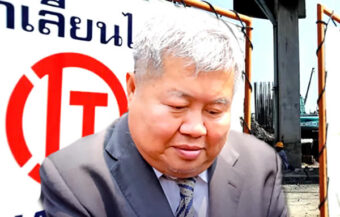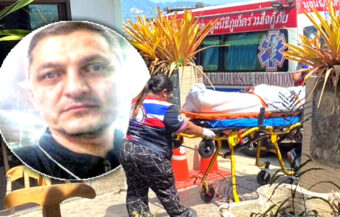Top Thai doctors are studying different virus strains to fully understand the disease as the government considers how to bring the country out of the emergency. Thailand is winning the battle against Covid 19. This can be clearly seen from hospitalisations. Nonetheless, key questions exist on the nature of this coronavirus and immunity for humans.
Thailand appears to be winning the war against the coronavirus and even sceptics and doubters must accept this given the declining rate of hospitalisations which the virus emergency is generating with a significant drop in the last week. Even so, the government still faces the huge economic challenge of safely getting the country back to work with many of Thailand’s leading virologists looking at the strains of the virus that have landed on the kingdom’s shores as scientists worldwide try to get a better understanding of the killer disease and prospects for human immunity.
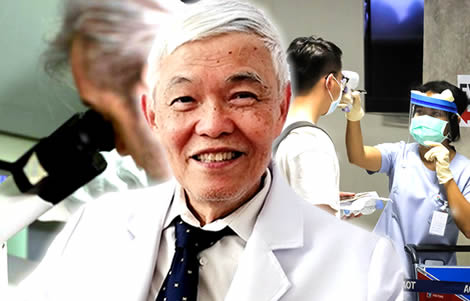
Thailand announced only 28 new infections on Monday with two more deaths from the Covid 19 virus bringing the country’s total death toll to 40.
The total number of cases recorded in the kingdom stands at 2,579. It appears, from the daily tally of figures, that the kingdom is being delivered from the most worrying consequences of the virus which threatened to become vastly more serious at the end of March when a virulent outbreak in Bangkok was followed by the declaration of a state of emergency as well as a plethora of lockdown and social distancing measures.
Limited testing in Thailand but hospitalisations is an acid test in itself showing authorities have done well
Many sceptics will suggest that the true extent of the virus and infection rate in Thailand has been underestimated because of limited testing. This is no secret and acknowledged openly by top officials.
However, an acid test and one of the indicators in the data provided by the Ministry of Public Health in Thailand on a daily basis, is the number of hospitalizations.
It reached a peak on April 5th at 1,472 and by Monday, that figure had dropped to 1,251.
Emergency in Moscow on Sunday with queues of ambulances outside hospitals- not enough beds for acute Covid 19 sufferers suddenly afflicted
Compare this to events on Sunday in Moscow when fleets of ambulances turned up outside already full hospitals with a huge surge in callouts with Russians in the city suffering from acute symptoms of the coronavirus.
Russia had initially denied that there was an epidemic in the country up until recent days when lockdowns were ordered.
Clearly, something has gone right in Thailand and some credit for that must be reserved for Thai authorities and the cooperation of the Thai public.
Thai researchers trying to understand the virus
The kingdom, like many other countries, is trying to understand the behaviour of the virus and in particular, evidence of immunity which might be the basis of a test for essential or key workers.
This may not be on the vast scale being planned in countries like the United Kingdom and the United States where wholesale tests are planned to greenlight large numbers of workers to safely allow them back to work.
Western countries counting on immunity to get their populations and economies back to work
The problem, however, is that it is generally assumed that an infected person becomes immune to the virus.
Over the weekend, Dr Anthony Fauci, director of the National Institute of Allergy and Infectious Disease who has become a key American spokesman on Covid 19 said that those recovered from the infection can ‘probably fight off the coronavirus if they encounter it again.’
Western governments are moving towards a system of mass testing for immunity to get workers back into the workplace as the best prospect of fully recovering economically from the outbreak.
30% of UK patient studies showed no evidence of immunity as doctors work towards an immunity test
However, this virus is showing signs that it may be more difficult to predict than others. Last week in the UK, scientists suggested that based on initial testing, up to 30% of recovered patients showed little or no evidence of antibodies from the virus which help create immunity.
This came about as top doctors there work towards a robust and reliable testing mechanism.
This concern is underlined by reported cases of patients being discharged after making a full recovery from the infection but who later come down sick again.
Thai woman in northeastern Thailand tests positive again for the virus after being released in March
This was the case for a woman in northeastern Thailand who was discharged from hospital in March having made a full recovery after being infected with the coronavirus.
However, between April 3rd and the 5th, the woman became ill again and was tested by Thai doctors. They found that she was still infected with the Covid 19 virus in the throat area.
Similar cases are being reported worldwide.
There have been 91 similar cases confirmed in South Korea where recovered patients believed to have recovered from the virus, were found to have it again.
Two key strains of Covid 19 now being investigated by virologists worldwide and in Thailand
The other controversial aspect of the virus is the reported mutation of the infection into two types as reported by the Chinese National Academy of Sciences on March 4th.
The oldest type or strain of the virus is type S or the Serine strain of the disease which is believed to have mutated into type L or the Leucine strain.
The country is still facing the economic challenge of the virus shutdown and trying to understand how the virus has spread in Thailand especially after March 6th when a boxing stadium event unleashed a wave of infection in Bangkok that led on to the state of emergency.
Top Chulalongkorn University virologists says Bangkok infections not the Wuhan type L version
This week, Dr Yong Pooworavan, the highly respected virologist with the faculty of medical science at Chulalongkorn University revealed some interesting aspects of the infection in Thailand.
For a start, Dr Yong’s research indicates that the March 6th outbreak at the Lumpini Boxing stadium which spread into the nightlife district of Bangkok was not the type L strain or the more aggressive form but the Type S strain.
The Type L form of the disease was the more prevalent one in Wuhan at a later stage but we should not forget that at the outset of the outbreak, the virus had a type S ancestor which was overtaken.
Chinese scientists on March 4th said they had found evidence that 30% of cases involved the type S strain while 70% involved its newer, more aggressive mutation.
Italian strain later identified in Thailand and blamed by top Thai expert for the March outbreak
In late March, Dr Manoon Leechawengwong, a Thai expert in respiratory infections identified the Italian strain of the virus which researchers identified at the outset of the epidemic there, had reached Thailand and was responsible for the deadly outbreak in central Bangkok.
Thai authorities, at the time, also identified a ‘super spreader’ of the infection who they indicated had just returned from Italy.
The outbreak in Italy has, so far, led to nearly 20,000 deaths.
Europe has also seen potent outbreaks in Spain, the UK and France while in the United States, deaths from the virus went up over the 20,000 mark this weekend.
A lot of uncertainty over the data surrounding the two strains at this time not least due to unreliable samples
There is still a lot of uncertainty about the characteristics of both strains and the accuracy of the data available.
Virologists are now just examining the two strains looking for patterns. They are also looking for clues to the origins of the virus in the first place.
Ian Jones is professor of virology at the University of Reading. He explained that this early work was ‘an early study of the evolution of the new virus.’
He said that the ‘conclusions are reasonable, but they are not supported by any biological experiments so they remain plausible but not proven.’
Another expert, Ian Mackay, the adjunct Associate Professor at the University of Queensland in Australia, summed it up like this: ‘This is just humans seeing patterns and describing them at this stage.’
The type L or more infectious strain has been found in 70% of cases while type S has been found in 30%.
Richard Neher is a biologist at the Biozentrum of the University of Basel: ’Rapidly growing local outbreaks get sampled intensively and result in overrepresentation of some variants.
‘This happened early on around the Wuhan Seafood market and now with the Italian outbreak,’ he explained. ‘Any statistical inference needs to account for such sampling biases and just taking values at face values will result in wrong, misleading, or downright dangerous inferences.’
Type L reported to be more infectious or ‘aggressive’
Initially, doctors in China and elsewhere had described the type L strain as more infectious since it appears to have adapted itself to more easily infect human beings.
This may be quite misleading and top scientists have urged caution until more is known about how the virus and its different forms work on the human body which will come as researchers work towards a vaccine.
There are also recorded incidents from Australia and the United States of studied cases where people have been infected by both strains and indeed other variants of the virus.
Top scientists have cautioned about using terms to describe which of the two strains are more dangerous or virulent. The different strains are quite similar and the differences are more to do with the virus adapting to its environment.
At present, Dr Yong has revealed that he is examining up to 30 variations of the infection from patients including those from Wuhan, Singapore, Indonesia and Italy.
Further reading:
Virus may be partially airborne and Minister right in face mask fracas according to new US research
Health Minister in an outburst against western foreigners as 7 more are infected by the coronavirus
‘Zero’ – nationwide curfew announced on TV by the PM as the government steps up virus fight
Emergency could be extended as more people present themselves at hospitals due to the coronavirus
See Thai virus data here courtesy of the Thai Ministry of Public Health











